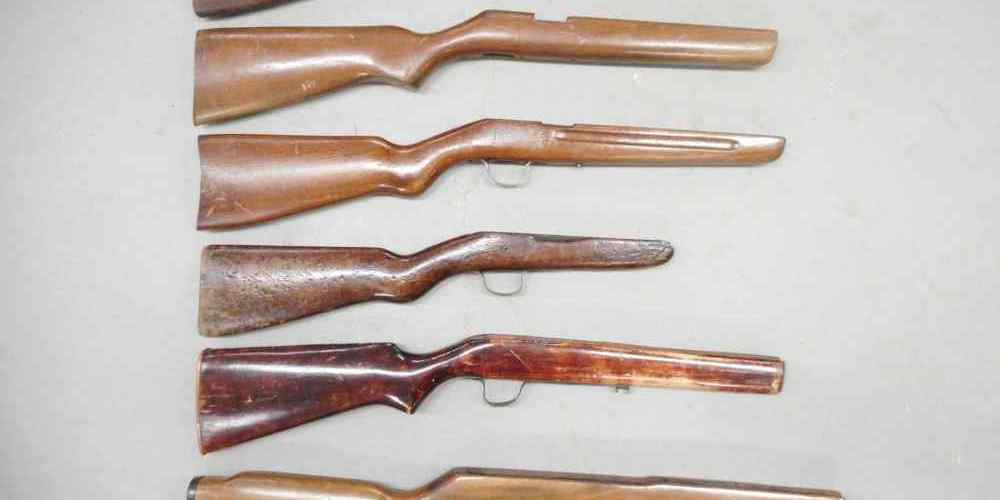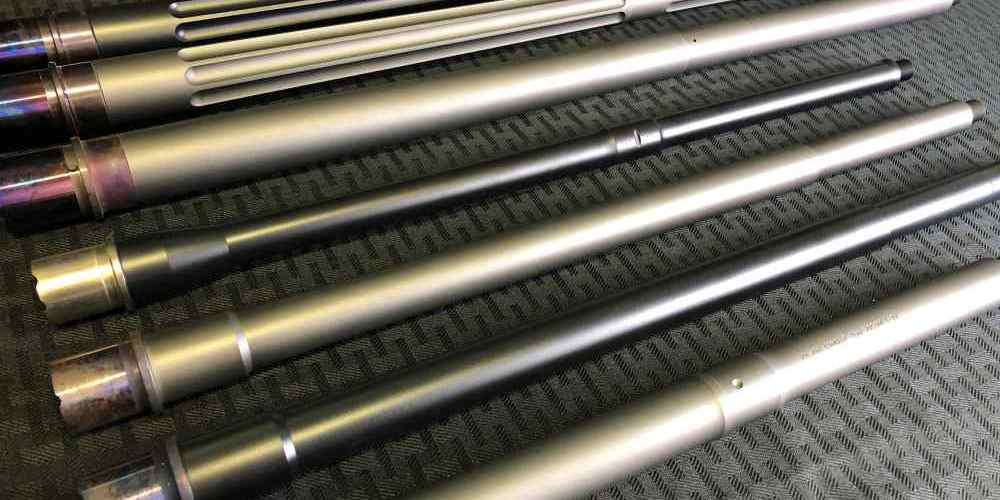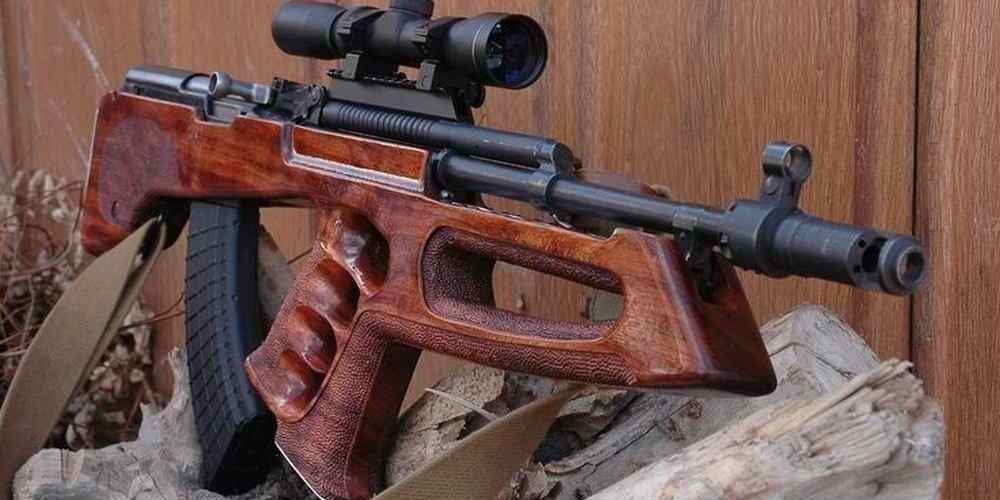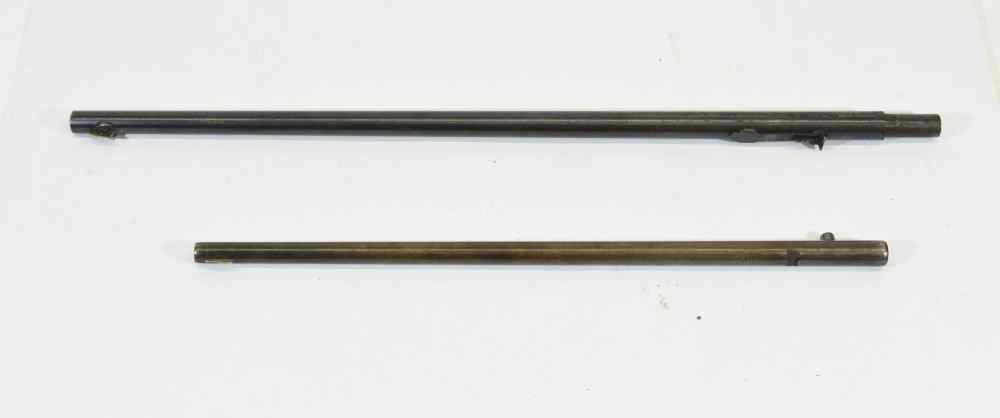“Unlocking the precision potential of your rifle with the right twist rate.”
Importance of Rifle Twist Rates in Long Range Shooting
When it comes to long-range shooting, there are many factors that can affect the accuracy and precision of your shots. One of the most important factors to consider is the rifle twist rate. The twist rate of a rifle barrel refers to the rate at which the rifling inside the barrel twists, which in turn affects the stability and accuracy of the bullet as it travels down the barrel.
Understanding the significance of rifle twist rates is crucial for long-range shooters who want to achieve consistent and accurate results. The twist rate of a rifle barrel is typically expressed as a ratio, such as 1:8 or 1:10. This ratio indicates how many inches the bullet will rotate for every inch of barrel length. For example, a 1:8 twist rate means that the bullet will make one complete rotation every 8 inches of barrel length.
The twist rate of a rifle barrel is important because it determines how well the bullet stabilizes as it travels down the barrel. A faster twist rate, such as 1:7 or 1:8, will cause the bullet to spin faster, which can help stabilize longer and heavier bullets. This can result in better accuracy and consistency at longer ranges.
On the other hand, a slower twist rate, such as 1:12 or 1:14, may not be able to stabilize heavier bullets as effectively, which can lead to decreased accuracy and consistency at longer ranges. It’s important to match the twist rate of your rifle barrel with the weight and length of the bullets you plan to shoot in order to achieve optimal performance.
In addition to stabilizing the bullet, the twist rate of a rifle barrel can also affect the velocity and trajectory of the bullet. A faster twist rate can sometimes increase the velocity of the bullet, while a slower twist rate may decrease velocity. This can impact the trajectory of the bullet and how it performs at different distances.
When choosing a rifle barrel with a specific twist rate, it’s important to consider the type of shooting you plan to do. For long-range shooting, a faster twist rate is generally preferred, as it can help stabilize heavier bullets and improve accuracy at longer distances. However, for shorter range shooting or hunting, a slower twist rate may be more appropriate.
It’s also worth noting that the twist rate of a rifle barrel is just one of many factors that can affect the accuracy and performance of your shots. Other factors to consider include the quality of the ammunition, the quality of the rifle, and the skill of the shooter.
In conclusion, understanding the significance of rifle twist rates is essential for long-range shooters who want to achieve consistent and accurate results. By choosing a rifle barrel with the right twist rate for your shooting needs, you can improve the stability, accuracy, and performance of your shots at longer distances. So next time you’re shopping for a new rifle barrel, be sure to consider the twist rate and how it can impact your shooting experience.
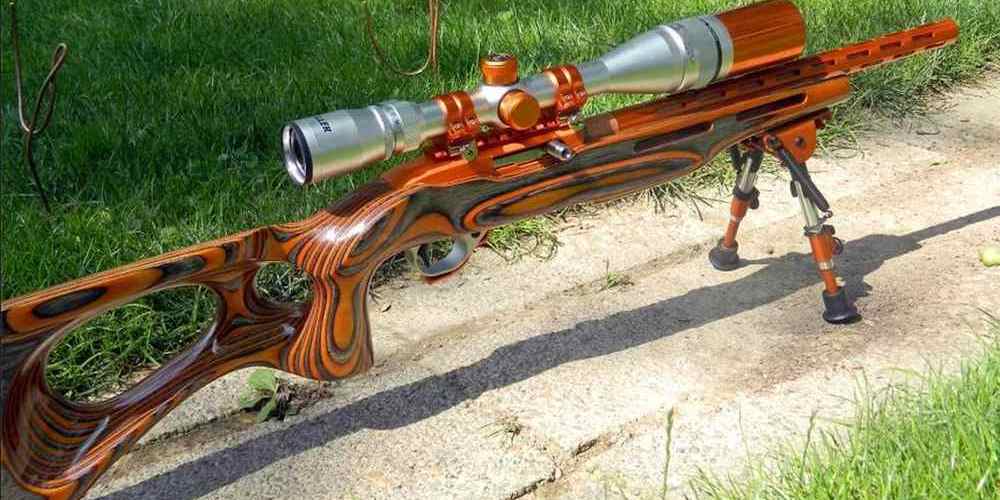
How Rifle Twist Rates Affect Bullet Stability
When it comes to shooting accurately with a rifle, there are many factors that come into play. One of the most important factors to consider is the rifle twist rate. The twist rate of a rifle barrel refers to how many inches it takes for a bullet to make one complete revolution as it travels down the barrel. This measurement is typically expressed as a ratio, such as 1:7 or 1:9, with the first number representing the number of inches it takes for the bullet to complete one revolution.
The twist rate of a rifle barrel has a significant impact on the stability of a bullet as it travels downrange. A faster twist rate, such as 1:7, will cause the bullet to spin more rapidly, which can help stabilize longer and heavier bullets. On the other hand, a slower twist rate, such as 1:12, will cause the bullet to spin more slowly, which may be better suited for lighter bullets.
The stability of a bullet is crucial for accuracy, as a bullet that is not stabilized will not fly true to its intended target. When a bullet is not stabilized, it can tumble or veer off course, leading to inaccurate shots. This is why understanding the significance of rifle twist rates is so important for shooters who want to achieve consistent and precise results.
In addition to stabilizing the bullet, the twist rate of a rifle barrel can also affect the overall performance of the bullet. For example, a faster twist rate may increase the velocity of the bullet, while a slower twist rate may decrease the velocity. This can impact the trajectory of the bullet and how it performs at different distances.
It is important for shooters to consider the type of ammunition they will be using when selecting a rifle with a specific twist rate. Different bullets perform best with different twist rates, so it is essential to match the twist rate of the rifle barrel with the type of ammunition being used. This will help ensure optimal performance and accuracy when shooting.
When choosing a rifle with a specific twist rate, shooters should also consider the intended use of the rifle. For example, a rifle with a faster twist rate may be better suited for long-range shooting, while a rifle with a slower twist rate may be better for short-range shooting. By understanding how rifle twist rates affect bullet stability, shooters can make informed decisions when selecting a rifle for their specific needs.
In conclusion, the significance of rifle twist rates cannot be overstated when it comes to shooting accurately. The twist rate of a rifle barrel plays a crucial role in stabilizing the bullet and impacting its overall performance. By understanding how twist rates affect bullet stability, shooters can make informed decisions when selecting a rifle and ammunition for their shooting needs. So next time you’re looking to improve your shooting accuracy, be sure to consider the twist rate of your rifle barrel.
Choosing the Right Rifle Twist Rate for Your Firearm
When it comes to choosing the right rifle twist rate for your firearm, it’s important to understand the significance of this factor in determining the accuracy and performance of your weapon. The rifle twist rate refers to the rate at which the rifling in the barrel twists, which in turn affects how the bullet spins as it travels down the barrel. This spinning motion stabilizes the bullet in flight, helping to improve accuracy and consistency.
One of the key factors to consider when selecting a rifle twist rate is the weight and length of the bullets you plan to use. Heavier and longer bullets require a faster twist rate to stabilize properly, while lighter and shorter bullets can perform well with a slower twist rate. It’s important to match the twist rate of your barrel to the specific type of ammunition you will be using to achieve optimal performance.
Another important consideration when choosing a rifle twist rate is the intended purpose of your firearm. For long-range shooting or hunting, a faster twist rate is generally preferred to ensure stability and accuracy over longer distances. On the other hand, for close-range shooting or tactical applications, a slower twist rate may be more suitable.
It’s also worth noting that different calibers and types of ammunition may require different twist rates to achieve optimal performance. For example, a .223 caliber rifle may have a twist rate of 1:7, while a .308 caliber rifle may have a twist rate of 1:10. It’s important to do your research and consult with experts to determine the best twist rate for your specific firearm and ammunition.
In addition to considering the weight and length of the bullets and the intended purpose of your firearm, it’s also important to take into account the material and quality of the barrel. A high-quality barrel with precise rifling will help to maximize the benefits of the chosen twist rate, while a lower-quality barrel may not perform as well even with the correct twist rate.
When selecting a rifle twist rate, it’s important to remember that there is no one-size-fits-all solution. Each firearm and ammunition combination is unique, and what works well for one may not work as effectively for another. It may require some trial and error to find the perfect twist rate for your specific setup, but the effort is well worth it in terms of improved accuracy and performance.
In conclusion, understanding the significance of rifle twist rates is essential for choosing the right twist rate for your firearm. By considering factors such as bullet weight and length, intended purpose, caliber, and barrel quality, you can make an informed decision that will help to maximize the accuracy and performance of your weapon. Take the time to research and experiment with different twist rates to find the perfect match for your specific setup, and enjoy improved shooting results as a result.
Understanding the Relationship Between Bullet Weight and Twist Rate
When it comes to shooting accurately with a rifle, there are many factors to consider. One of the most important factors is the rifle twist rate. The twist rate of a rifle barrel refers to how many inches it takes for a bullet to make one complete revolution as it travels down the barrel. This measurement is crucial because it directly affects the stability and accuracy of the bullet as it flies towards its target.
The relationship between bullet weight and twist rate is a key aspect of understanding how a rifle performs. The twist rate of a barrel is typically expressed as a ratio, such as 1:9 or 1:7. This ratio indicates how many inches it takes for the bullet to complete one full rotation. For example, a 1:9 twist rate means that the bullet will make one complete rotation every 9 inches of travel down the barrel.
The twist rate of a rifle barrel is directly related to the weight of the bullet being fired. Heavier bullets require a faster twist rate to stabilize them in flight. This is because heavier bullets have a longer length and therefore need more spin to keep them flying straight. On the other hand, lighter bullets can be stabilized with a slower twist rate because they do not require as much spin to maintain their trajectory.
For example, a 1:9 twist rate is ideal for stabilizing bullets in the 55 to 77 grain range, while a 1:7 twist rate is better suited for heavier bullets in the 69 to 90 grain range. Using the correct twist rate for the weight of the bullet being fired is essential for achieving optimal accuracy and performance.
It is important to note that using the wrong twist rate for a particular bullet weight can result in poor accuracy and inconsistent performance. If a bullet is not properly stabilized in flight, it can veer off course and miss the target altogether. This is why it is crucial to match the twist rate of the barrel to the weight of the bullet being used.
In addition to bullet weight, other factors such as barrel length and rifling design can also affect the performance of a rifle. Longer barrels generally require a faster twist rate to stabilize the bullet, while shorter barrels may perform better with a slower twist rate. The design of the rifling, such as traditional lands and grooves or polygonal rifling, can also impact how well a bullet is stabilized in flight.
In conclusion, understanding the relationship between bullet weight and twist rate is essential for achieving optimal accuracy and performance with a rifle. By using the correct twist rate for the weight of the bullet being fired, shooters can ensure that their shots hit the target with precision and consistency. Paying attention to this important factor can make a significant difference in the overall performance of a rifle.
Exploring the Impact of Barrel Length on Rifle Twist Rates
When it comes to understanding the significance of rifle twist rates, one important factor to consider is the impact of barrel length. The twist rate of a rifle barrel refers to the rate at which the rifling inside the barrel twists, which affects the stability and accuracy of the bullet as it travels down the barrel.
Barrel length plays a crucial role in determining the optimal twist rate for a rifle. A longer barrel typically requires a faster twist rate to stabilize the bullet as it travels through the barrel. This is because the longer distance the bullet has to travel before exiting the barrel allows more time for it to destabilize if the twist rate is too slow.
On the other hand, a shorter barrel may require a slower twist rate to achieve optimal stability. This is because the shorter distance the bullet has to travel before exiting the barrel means that it has less time to destabilize if the twist rate is too fast.
It is important to note that the relationship between barrel length and twist rate is not always straightforward. Factors such as bullet weight, velocity, and shape can also influence the optimal twist rate for a particular rifle. Additionally, different types of ammunition may perform better with different twist rates, so it is important to experiment with different combinations to find the best match for your rifle.
One common misconception is that a faster twist rate is always better for accuracy. While a faster twist rate can help stabilize heavier and longer bullets, it may not be necessary for lighter or shorter bullets. In fact, using a twist rate that is too fast for a particular bullet can actually decrease accuracy by causing the bullet to over-stabilize and veer off course.
Conversely, using a twist rate that is too slow can result in the bullet tumbling or keyholing, which can also negatively impact accuracy. Finding the right balance between barrel length and twist rate is essential for achieving optimal accuracy and performance with your rifle.
In conclusion, understanding the significance of rifle twist rates and their relationship to barrel length is crucial for achieving optimal accuracy and performance with your rifle. Experimenting with different twist rates and ammunition types can help you find the best match for your specific rifle and shooting needs. By taking the time to understand these factors and make informed decisions, you can improve your shooting skills and enjoy a more rewarding shooting experience.



